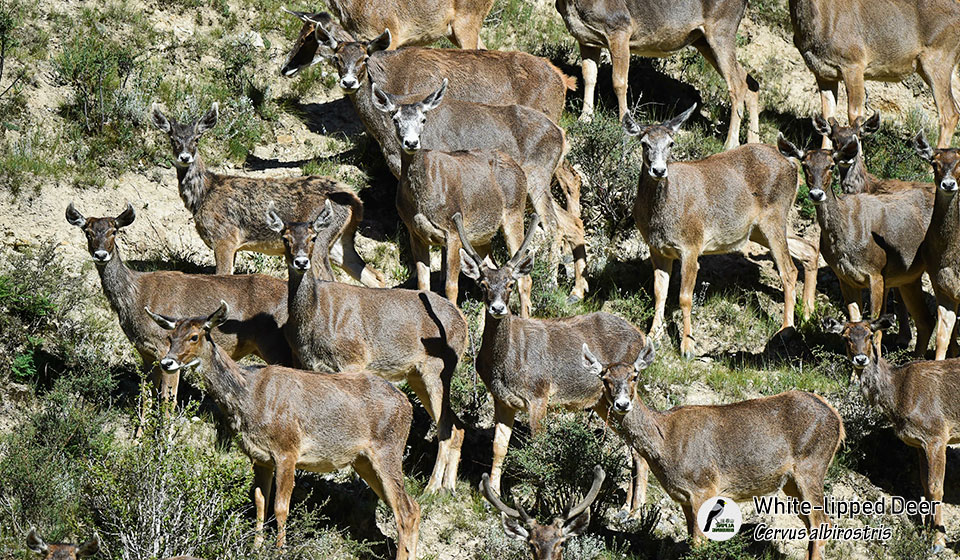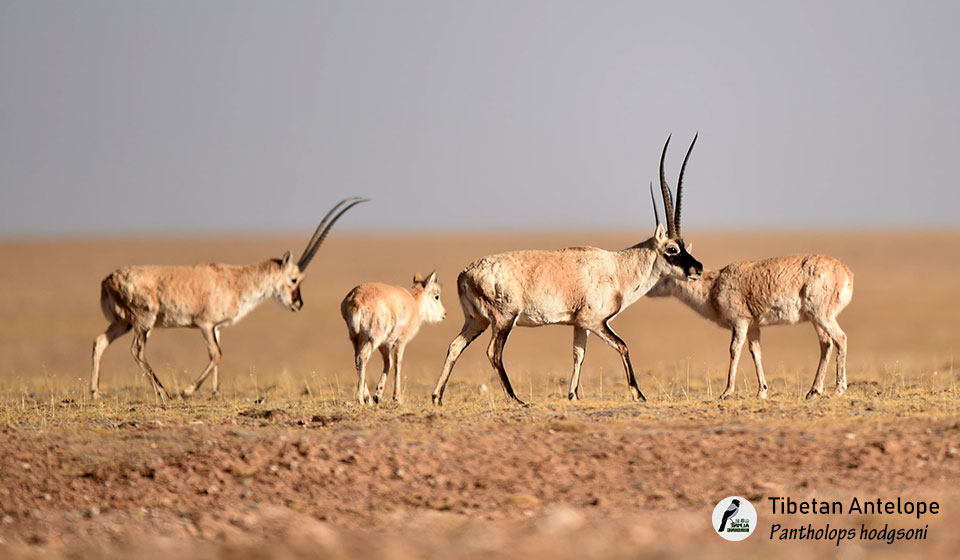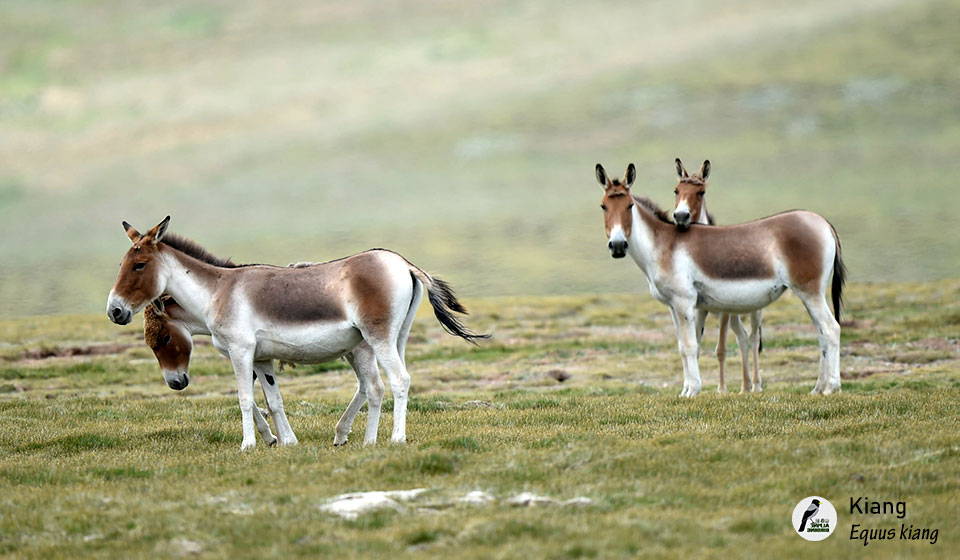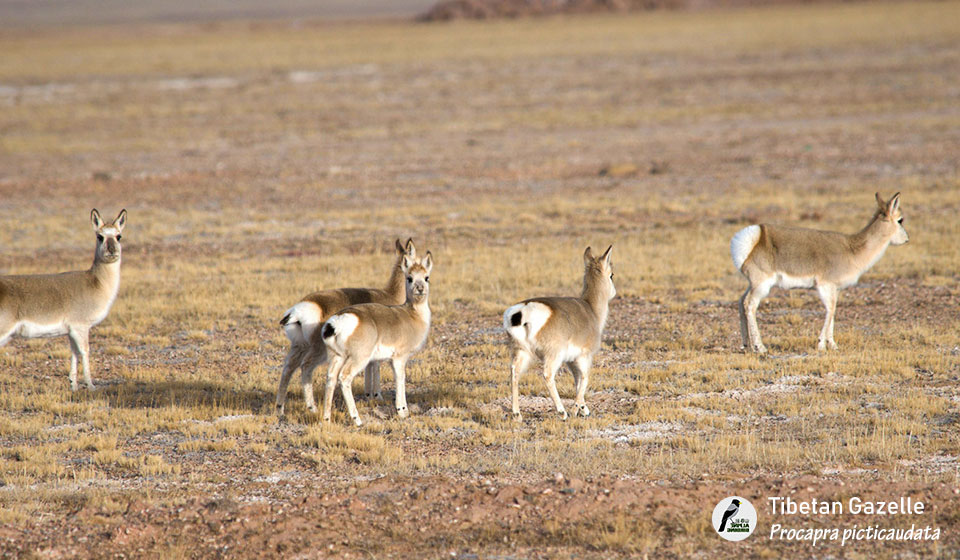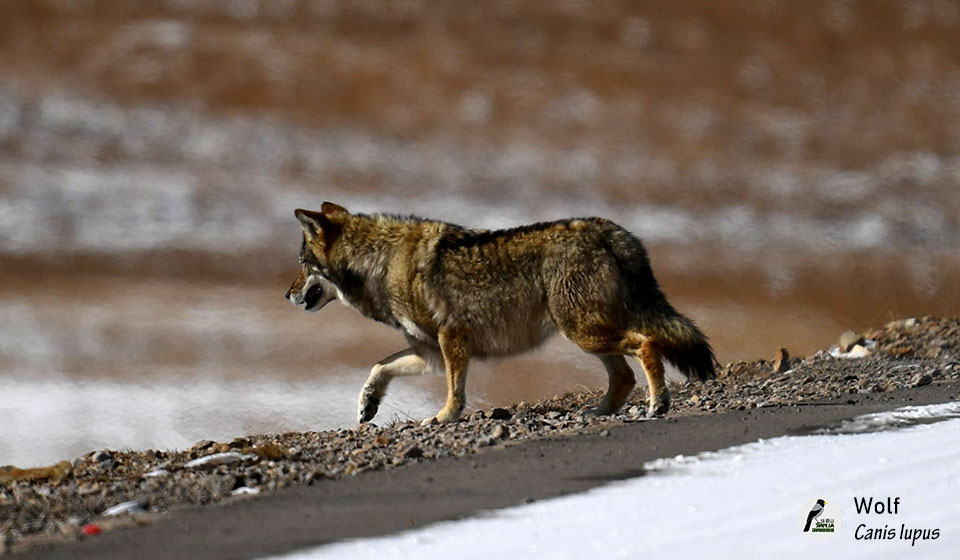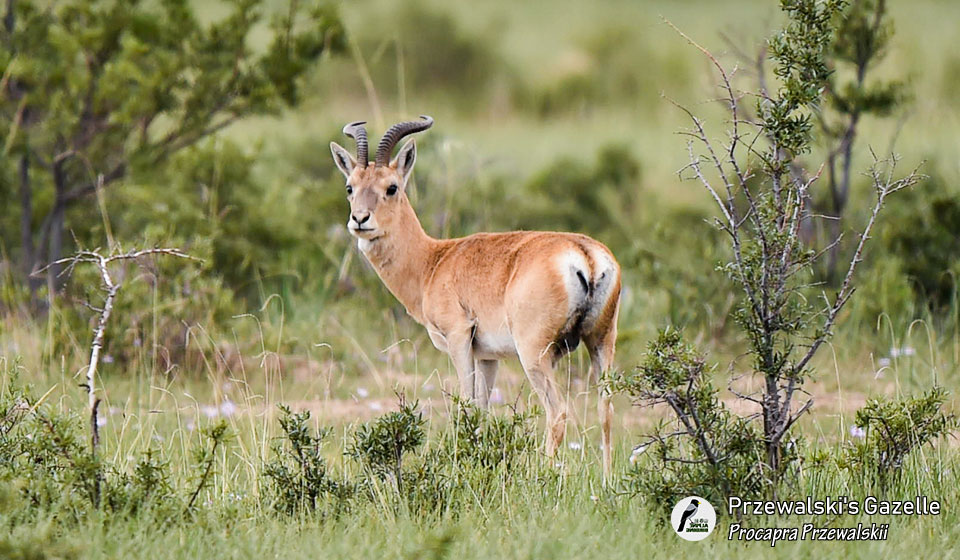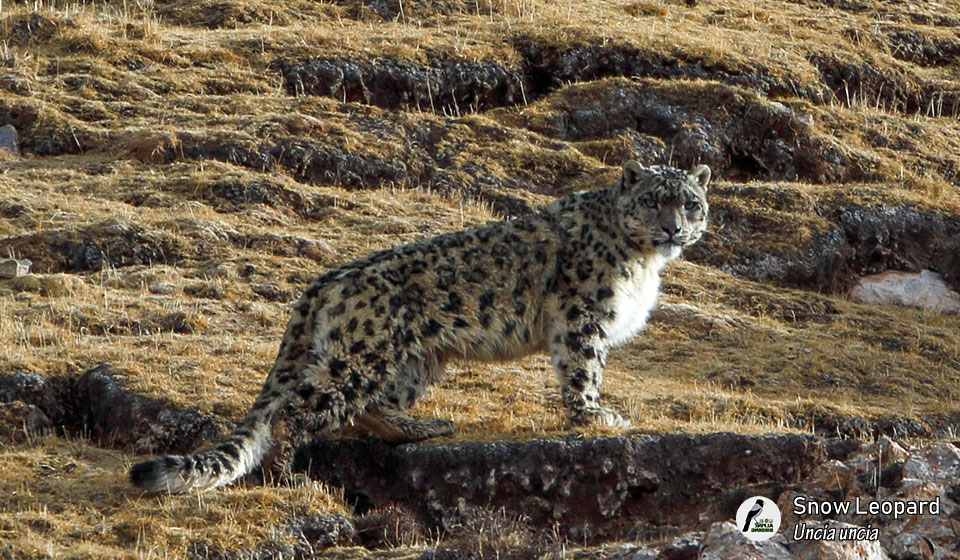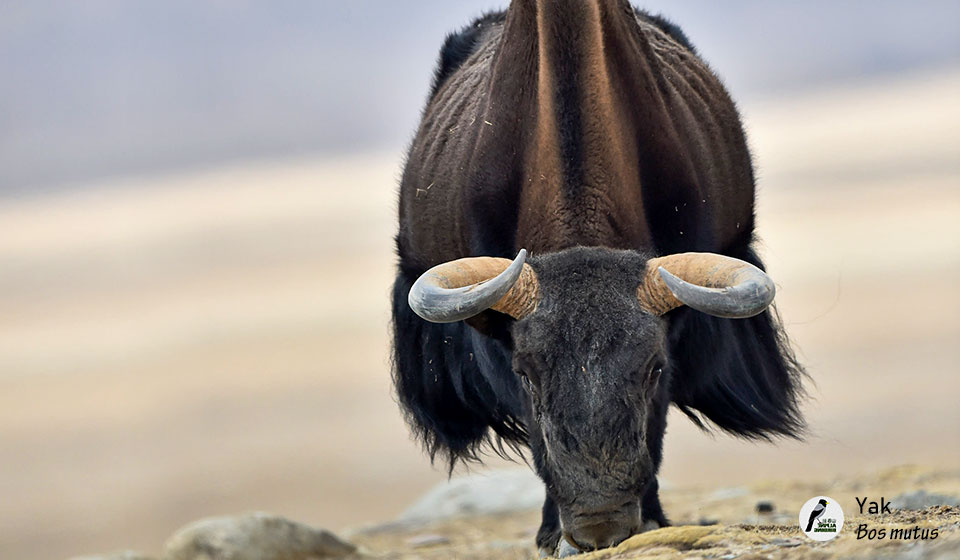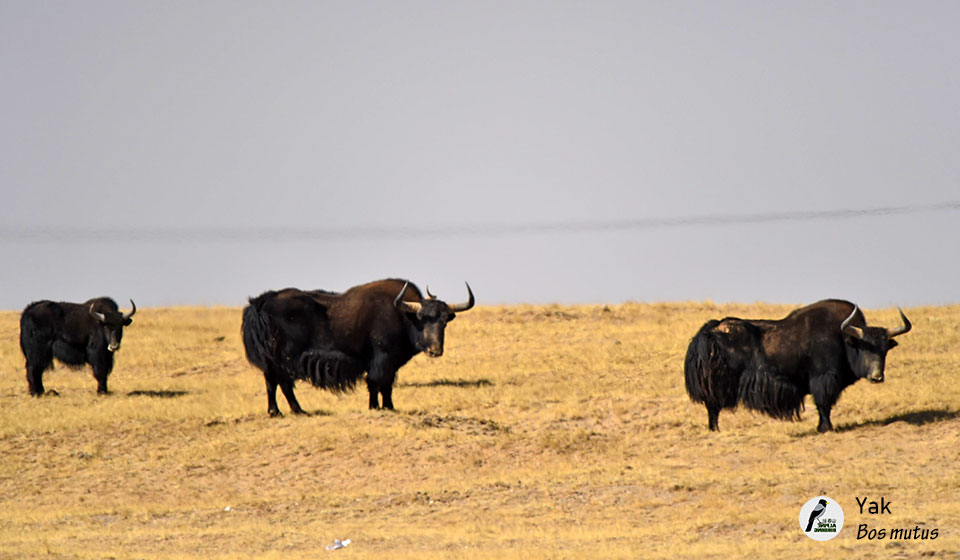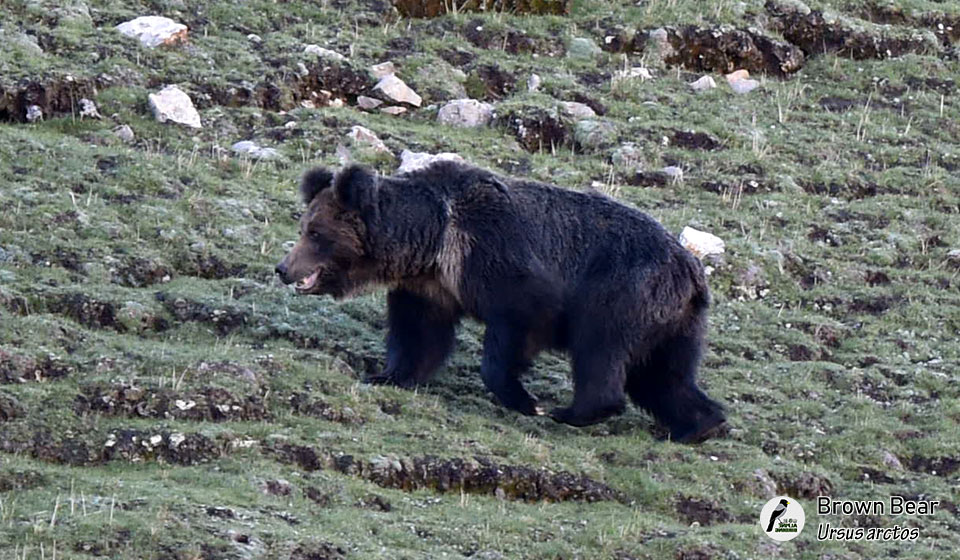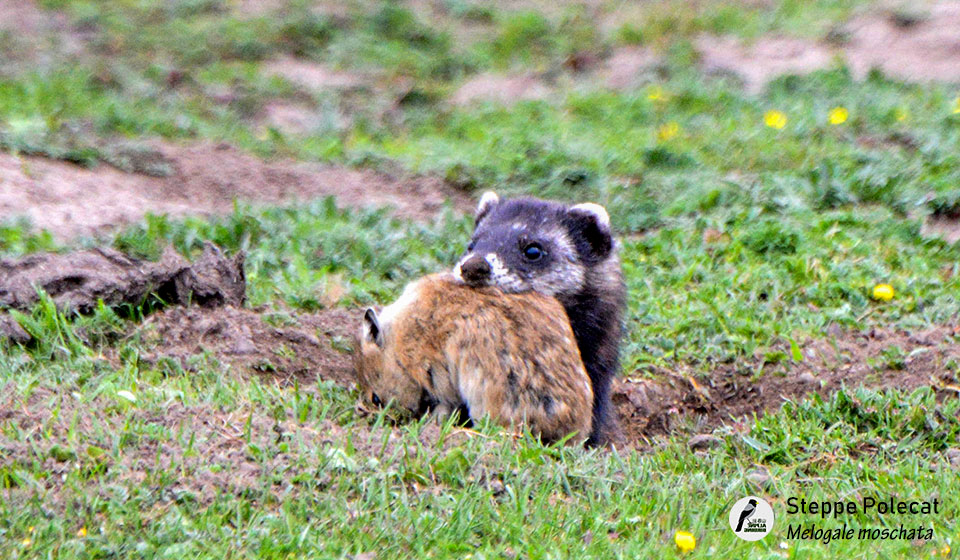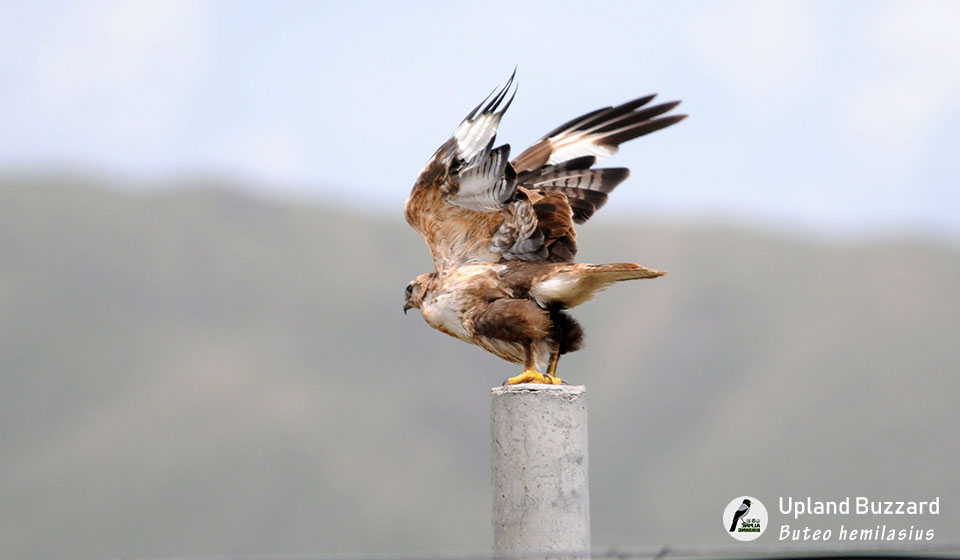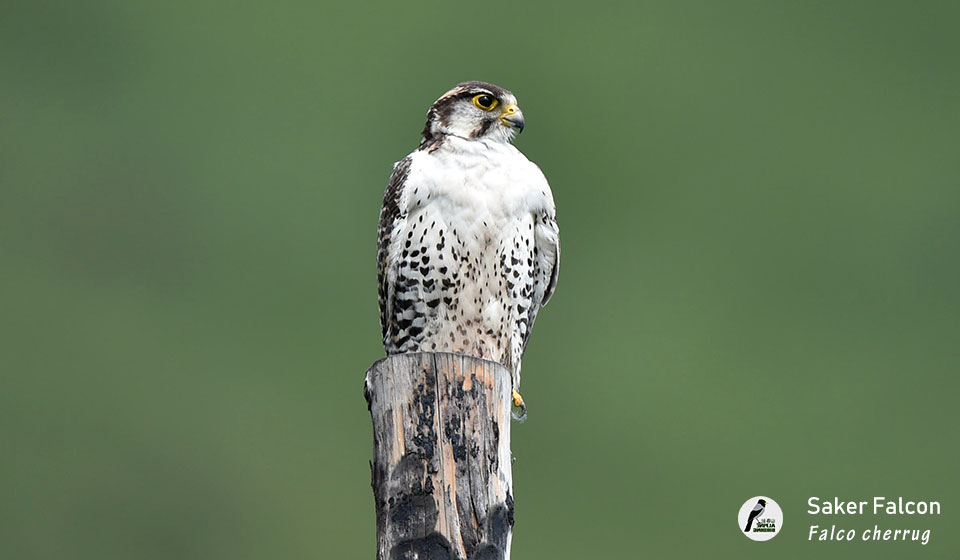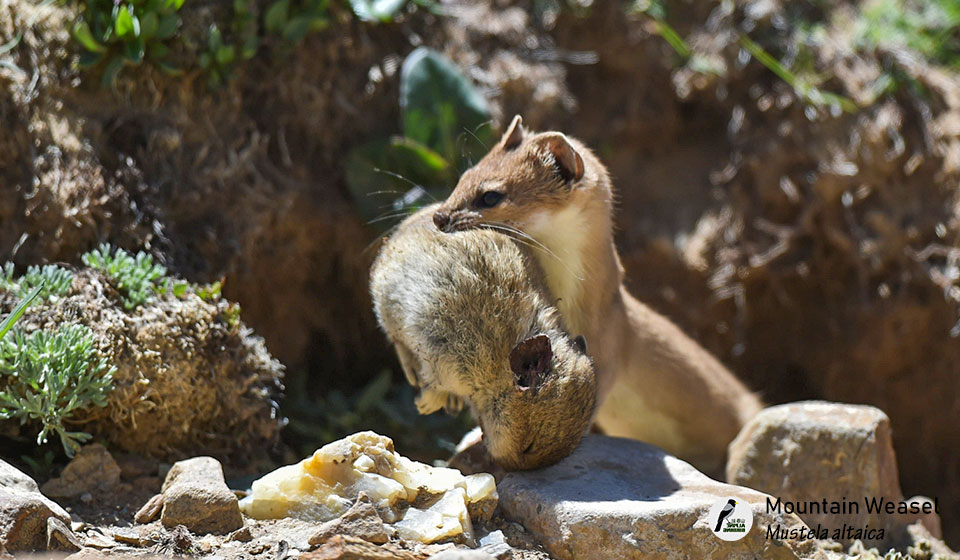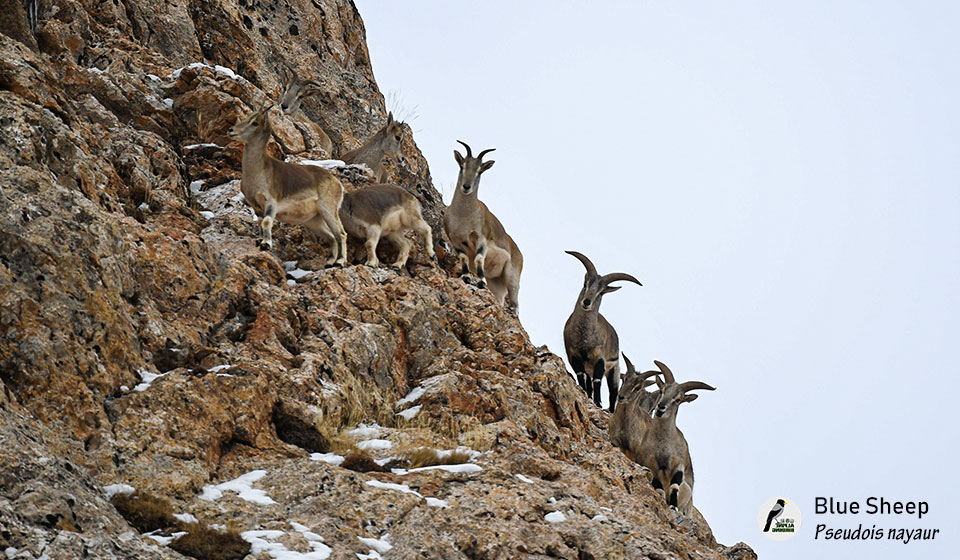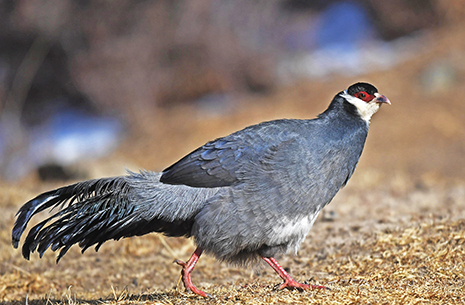With an average elevation exceeding 4,500 meters, the Qinghai-Tibet Plateau is referred to as "the Roof of the World". The massive mountain ranges on the plateau have created numerous relatively isolated geographical conditions supporting a great number of range-restricted wildlife species. This trip will be started in Xining, the capital of Qinghai Province, and go further east to the Kunlun Mountains and vast Hoh Xil Nature Reserve, where we will encounter some unique mammals and birds you can see nowhere else.
On this trip you will be amazed by the breathtaking alpine scenery, boundless desert, the holly Qinghai Lake (Kokonor Lake), the nomadic Tibetan culture, endemic birds, elegant Tibetan Antelope, powerful Wild Yak, cautious Kiang, cute Tibetan Gazelle, and curious pikas, just to name a few. The prevalent Tibetan Buddhist beliefs in the region have worked in many respects to preserve the natural wealth of this wide region. The wildlife abundance of Qinghai and the beauty, the richness can be directly linked to a harmonious balance between animals and humans. Here in Qinghai, respect for the equality of nature and animals is a spiritual obligation.
Tour Info Sheet
| Highlight Birds | Buff-throated Partridge, Tibetan Partridge, White Eared Pheasant, Blood Pheasant, Tibetan Snowcock, Rusty-necklaced (Przevalski's) Partridge, Pallas's Sandgrouse, Black-necked Crane, Ibisbill, Przevalski's (Ala Shan) Redstart, Przevalski's Pinktail, Tibetan Bunting, Tibetan Babax, Henderson's Ground Jay, Crested Tit Warbler, White-browed Tit Warbler, Gansu Leaf Warbler, Chinese Nuthatch (Snowy-browed Nuthatch), Przewalski's Nuthatch (White-cheeked Nuthatch), Plain Laughingthrush, Elliot's Laughingthrush, Siberian Rubythroat, Chinese Thrush, Kessler's Thrush, Chestnut Thrush, Pink-rumped Rosefinch, Red-fronted Rosefinch, Common Rosefinch, Chinese White-browed Rosefinch, Grey-headed Bullfinch, Grey-capped Greenfinch, Red Crossbill, Slaty-backed Flycatcher, White-throated Redstart, Rufous-vented Tit, Isabelline Shrike, Isabelline Wheatear, Desert Wheatear, Crested Lark, Asian Short-toed Lark, Hume's Short-toed Lark, Mongolian Finch, Pere David's Snowfinch, Blanford's Snowfinch, etc. |
|---|---|
| Numbers of Species to Expect | 120-150 |
| Ease of Birding | moderate with a few tricky species |
| Highlight Mammals | Lynx, Chinese Serow, Tibetan Antelope, Tibetan Brown Bear, Wolf, Tibetan Fox, Kiang, Tibetan Gazelle, Przewalski's Gazelle, etc. |
| Other Attractions | Anduo Tibetan culture, Kangba Tibetan culture, minority culture of Hui and Tu, gorgeous plateau scenery |
| Photography Opportunities | good photography chances for birds, mammals, scenery, and the people |
| Habitats Covered | grasslands, subtropical forests, deserts, snow mountains, wetlands |
| Expected Climate | windy and cold in the morning, strong sunlight at daytime, snow is possible |
| Physical Requirements | mostly easy, demanding but optional in certain parts |
| Accommodation | comfortable |
| Transportation | 19-seat van |
What makes this trip irreplaceable?
1. Nice chances for plateau specials including Przewalski's Gazelle, Pallas's Cat, Tibetan Antelope, Wild Yak, Tibetan Gazelle, Tibetan Fox, Tibetan Wolf, White-lipped Deer, Kiang, etc.
2. Plateau birds including Tibetan Snowcock, Rusty-necklaced Partridge, Blue Eared Pheasant, Black-necked Crane, Bar-headed Goose, Ibisbill, etc.
3. Exploration in Sanjiangyuan Nature Reserve and Hoh Xil Nature Reserve.
4. The breath-taking scenery of imposing snow-capped mountains, vast grasslands, Tibetan nomadic tents.
5. An immersive cultural experience of Anduo and Kangba Tibetans by learning the costumes, architecture, monasteries, etc.
6. The combination of our experienced western guides and local guides ensures your needs are well met.
6. The combination of our experienced western guides and local guides ensures your needs are well met.
7. We have been a reliable local partner for some prestigious western birding and wildlife travel companies for over a decade.
8. We have a strong logistic team to ensure your trip goes smoothly and ensures a comfortable and enjoyable journey.
Dates & Prices
| Dates | Booking States | Price | Single Supplement | Group Size | Guides |
|---|---|---|---|---|---|
| Jul 5-18, 2025 | Space Available | TBA | TBA | 6-8 | Local Guide |
Slide the sheet to the left to see the full sheet if you are viewing it on your phone or tablet.
The cost includes the following:
1. Private transportation throughout the trip, including airport pick-up and drop-off at Xining Airport. Internal flight ticket as listed in the itinerary.
2. All meals from dinner on day 1 to breakfast on day 14.
3. All the entrance tickets for places listed in the itinerary including cable cars and shuttle buses.
4. Hotel stays from the first day to the last day, two clients occupy one twin-bed room on a sharing basis at nice 3 or 4-star hotels in big cities and local best guesthouses in remote areas.
5. Bottled water and snacks throughout the trip.
6. Simple western breakfast whenever possible.
7. Service charges of a professional western bird guide and an experienced local bird guide throughout the whole trip.
8. China domestic travel insurance.
9. Service of all logistic supports.
The cost does not include the following:
a. Drinks during meals.
b. Extra charges due to changes in the itinerary from the client's side or factors beyond the control of AlpineBirding such as natural disasters or government policy changes.
c. Discretionary tips to guides and drivers.
d. All personal expenses such as laundry service.
e. ANY AIRFARE except those stated in the itinerary.
f. Any program not listed in the itinerary.
Itinerary
Tour Map
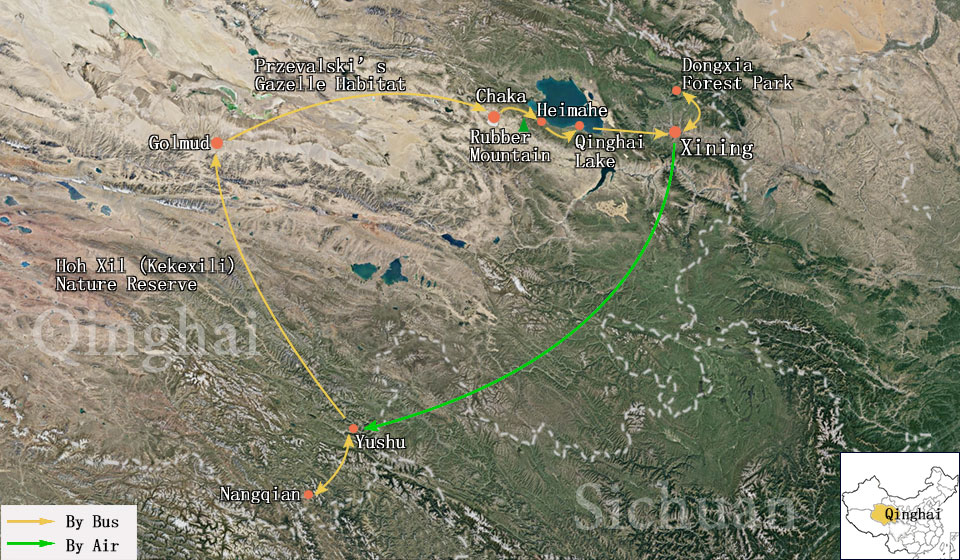
Day 1: Arrival in Xining, China (Alt.: ~2,300m).
After arriving in Xining, the capital of Qinghai Province and the largest city on the Tibetan Plateau, you will be met by your AlpineBirding bird guide or driver, then get transferred to the hotel in the city. Depending on your time of arrival, you can join an easy birding exploration on a nearby mountain this afternoon. We will focus on some forest birds like Eurasian Sparrowhawk, Grey-headed Woodpecker, Plain Laughingthrush, Oriental Turtle Dove, Hill Pigeon, Chestnut Thrush, Godlewski's Bunting, Meadow Bunting, Red-billed Chough, Black Redstart, and Daurian Redstart. Additionally, we will also try to spot the Pale Rosefinch, we may encounter Chinese Red Pika as well.
After the exploration, we will have dinner at a local restaurant that gives us opportunities to get to know each other and discuss our adventures.
Day 2: Visit of Dongxia Forest Park (Alt.: ~2,300m).
This morning, we will drive north towards Dongxia Forest Park. The evergreen conifer woods are the dominant tree species in the forest while lush shrubs occupy the forest gaps and openings, both provide great habitats for small forest birds. We can seek out some exciting species such as the Crested Tit Warbler, White-browed Tit Warbler, Gansu Leaf Warbler, Chinese Nuthatch (Snowy-browed Nuthatch), Przewalski's Nuthatch (White-cheeked Nuthatch), Plain Laughingthrush, Elliot's Laughingthrush, Siberian Rubythroat, and Chinese Thrush.
We will explore different hills here patiently, the dense forest is also home to other noteworthy species like Daurian Jackdaw, Rook, Kessler's Thrush, Chestnut Thrush, Common Rosefinch, Chinese White-browed Rosefinch, Grey-headed Bullfinch, Grey-capped Greenfinch, Red Crossbill, Slaty-backed Flycatcher, White-throated Redstart, Rufous-vented Tit, as well as the shy Smoky Warbler. After the exploration, we will drive back to Xining.
Day 3: Fly to Yushu, then drive to Nangqian (Alt.: 2,300-3,650m).
We will take a morning flight to Yushu and drive further east for about 3 hours along the rugged and grand valleys towards Nangqian and spend two nights there.
Day 4: Kanda Mountain & Baizha Forest (Alt.: ~3,650m).
The rugged mountains in this area are preferred by Snow Leopard, an elusive and incredible predator dominating the plateau. Spotting a leopard is slim but likely, we will spare no effort to carefully scan the rocky slopes. Lynx, Chinese Serow, and Alpine Musk Deer are also challenging targets but with better chances. In spite of this, we should be reworded by other plateau species inhabit here, such as Red Deer, White-lipped Deer, Asian Badger, Alpine Weasel, etc.
Nangqian also holds fantastic birding resources, our two days' searching in this area typically provides many bird sightings. We will visit Kanda Mountain and Baizha Forest, as well as some nearby valleys. The three range-limited endemic species, namely the Buff-throated Partridge (Szechenyi's Monal Partridge), Tibetan Bunting, and Tibetan Babax will be our top targets. Additionally, we can expect some other exciting species like Tibetan Partridge, White Eared Pheasant, Blood Pheasant, Tibetan Snowcock, Snow Pigeon, Hill Pigeon, Salim Ali's Swift, Three-toed Woodpecker, Black Woodpecker, Grey-backed Shrike, Elliot's Laughingthrush, Kessler's Thrush (White-backed Thrush), Blue-fronted Redstart, Hodgson's Redstart, Pink-rumped Rosefinch, Red-fronted Rosefinch, Chinese White-browed Rosefinch, Rufous-vented Tit, Sichuan Tit, Crested Tit Warbler, White-browed Tit Warbler, Yellow-streaked Warbler, Sichuan Leaf Warbler, Greenish Warbler, Chinese Rubythroat, Lammergeier (Bearded Vulture), Golden Eagle, Daurian Jackdaw, Alpine Chough, White-throated Dipper, White-winged Grosbeak, Godlewski's Bunting, etc. Particularly, we can search for the river shoals for Ibisbill.
Day 5: Nangqian to Yushu (Alt.: ~3,650m).
We will spend most of the day birding in Nangqian in search of our priority targets. In the late afternoon, we drive back to Yushu for an overnight stay. We can try the Ibisbill again in the Yushu area.
Day 6-7: Hoh Xil (Kekexili) Nature Reserve (Alt.: 4,000-4,600m).
As a sparsely inhabited region with a variety of different climatic zones, the Hoh Xil features a wide variety of beautiful natural features and diverse wildlife species. We will spend two days in this area. As a place surrounded by snow-covered mountains, icy peaks, deserts, and vast pastures, there are few places in China as breathtaking, scenic, and diverse as it is here. The prevalent Tibetan Buddhist beliefs in the region have worked in many respects to preserve the natural wealth of this wide region.
In this main habitat of Tibetan Antelope, we may see them numerous times appear as flocks of different sizes. Our time will also be spared on searching for Wild Yak and Argali. There is a possibility we encounter Tibetan Brown Bear and Wolf wandering alone during our exploration. Other mammals liken Tibetan Fox, Kiang, and Tibetan Gazelle are relatively easy here.
Day 8: Hoh Xil to Golmud (Alt.: 4,600-2,800m).
Continuing our exploration across the Hoh Xil to try all out targets, after that, we will drive on to Golmud for a nice stay.
Day 9: Golmud to Przevalski's Gazelle Habitat (Alt.: 2,800-3,100m).
In the following two days, we will focus on Przewalski's Gazelle, one of the rarest mammals in the world that once reduced to around 300 in the 1990s. With the conservation efforts input by various sides, the population has grown to around 2,000. The area we visit holds some stable groups that provide nice opportunities for us. Goitered Gazelle also inhabits here but is shyer and more elusive compared with Przewalski's Gazelle.
Day 10: Przevalski's Gazelle Habitat to Chaka (Alt.: ~3,100m).
Depending on how we have done with our target plateau mammals, we can either spend more time in the habitat or drive to our next destination, Chaka.
Day 11: Chaka & surrounds (Alt.: ~3,100m).
This day will be spent on the harsh deserts and arid mountain ranges of Chaka searching for some plateau and desert birds. Some of these birds require a level of patience as they are well-adapted to staying hidden in this vast ecosystem, but these birds are well worth the effort. For instance, the Pallas's Sandgrouse is a gorgeous desert species and is adept at camouflaging itself in the ochre desert steppe. We will also look for other sought-after species including Henderson's Ground Jay, Isabelline Shrike, Isabelline Wheatear, Desert Wheatear, Crested Lark, Asian Short-toed Lark, Hume's Short-toed Lark, Mongolian Finch, Pere David's Snowfinch, and Blanford's Snowfinch.
In the forest bordering the nearby villages, we will focus on some arboreal species such as Eurasian Golden Oriole, Great Spotted Woodpecker, White-cheeked Starling, Eurasian Hoopoe, Azure-winged Magpie, Upland Buzzard, Amur Falcon, etc. Additionally, we plan to spend some time in the nearby valleys of bush fallows and meadows to search for birds such as the rare and elusive Przevalski's (Ala Shan) Redstart, Rusty-necklaced (Przevalski's) Partridge, Tibetan Partridge, Hill Pigeon, Black Redstart, Pine Bunting, etc.
Day 12: Chaka to Heimahe (Alt.: ~3,200m) via Rubber Mountain.
We will drive to Heimahe via Rubber Mountain. The mixed shrubs and meadows of the mountain are perfect hides for the Przevalski's Pinktail (Pink-tailed Bunting), which is a bird in a family all of its own. There are many other exciting bird species that hide in the scrubs on the mountain slopes such as the shy Tibetan Partridge, Saker Falcon, Streaked Rosefinch, Chinese White-browed Rosefinch, Tibetan Snowfinch, White-rumped Snowfinch, Rufous-necked Snowfinch, Rufous-breasted Accentor, Brown Accentor, Robin Accentor, White-browed Tit, Ground Tit, Himalayan Griffon, and Upland Buzzard.
Day 13: Heimahe to Xining via Qinghai Lake (Alt.: 3,200-2,300m).
We can spend more time in Rubber Mountain if needed, then we will drive back to Xining. Along the way, we will take some time to enjoy the breathtaking scenery of Qinghai Lake, the biggest lake in China. We will see some waterfowls, including Black-necked Crane, the only crane breeds on the plateau. Other sought-after bird species we can expect including Bar-headed Goose, Northern Pintail, Red-crested Pochard, Eurasian Wigeon, Whooper Swan, Ferruginous Duck, Ruddy Shelduck, Tufted Duck, Black-necked Grebe, Great Crested Grebe, Little Grebe, Pallas's Gull, Kentish Plover, Pale Martin, Green Sandpiper, Common Redshank, etc.
We will also spend some time looking for grassland species such as Twite, Hume's Short-toed Lark, Asia Short-toed Lark, Mongolian Lark, Tibetan Lark, Rufous-necked Snowfinch, Pere David's Snowfinch, Isabelline Wheatear, Ground Tit, etc.
Day 14: Departure from Xining or join Lhasa Extension.
Following a lovely breakfast at the hotel, you will be transferred to the airport to depart from Xining or join the 4 days "Lhasa Birding & Culture Exploration". This will conclude the services for this scheduled itinerary from AlpineBirding.
Guide(s)
Local Guide
Reports
We don't have a report available for this tour at this stage, please feel free to email us, we are more than happy to answer any of your questions and share the latest bird information with you.
Testimonials
We don't have feedback on this trip yet. Please see other testimonials of AlpinBirding on the page linked at http://zygl.fytzw.com/index.php?m=content&c=index&a=lists&catid=13.
